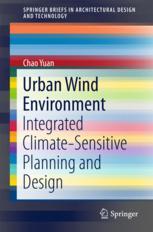

Most ebook files are in PDF format, so you can easily read them using various software such as Foxit Reader or directly on the Google Chrome browser.
Some ebook files are released by publishers in other formats such as .awz, .mobi, .epub, .fb2, etc. You may need to install specific software to read these formats on mobile/PC, such as Calibre.
Please read the tutorial at this link: https://ebookbell.com/faq
We offer FREE conversion to the popular formats you request; however, this may take some time. Therefore, right after payment, please email us, and we will try to provide the service as quickly as possible.
For some exceptional file formats or broken links (if any), please refrain from opening any disputes. Instead, email us first, and we will try to assist within a maximum of 6 hours.
EbookBell Team

5.0
110 reviewsIn the context of urbanization and compact urban living, conventional experience-based planning and design often cannot adequately address the serious environmental issues, such as thermal comfort and air quality. The ultimate goal of this book is to facilitate a paradigm shift from the conventional experience-based ways to a more scientific, evidence-based process of decision making in both urban planning and architectural design stage. This book introduces novel yet practical modelling and mapping methods, and provides scientific understandings of the urban typologies and wind environment from the urban to building scale through real examples and case studies. The tools provided in this book aid a systematic implementation of environmental information from urban planning to building design by making wind information more accessible to both urban planners and architects, and significantly increasing the impact of urban climate information on the practical urban planning and design. This book is a useful reference book to architectural postgraduates, design practitioners and planners, urban climate researchers, as well as policy makers for developing future livable and sustainable cities.